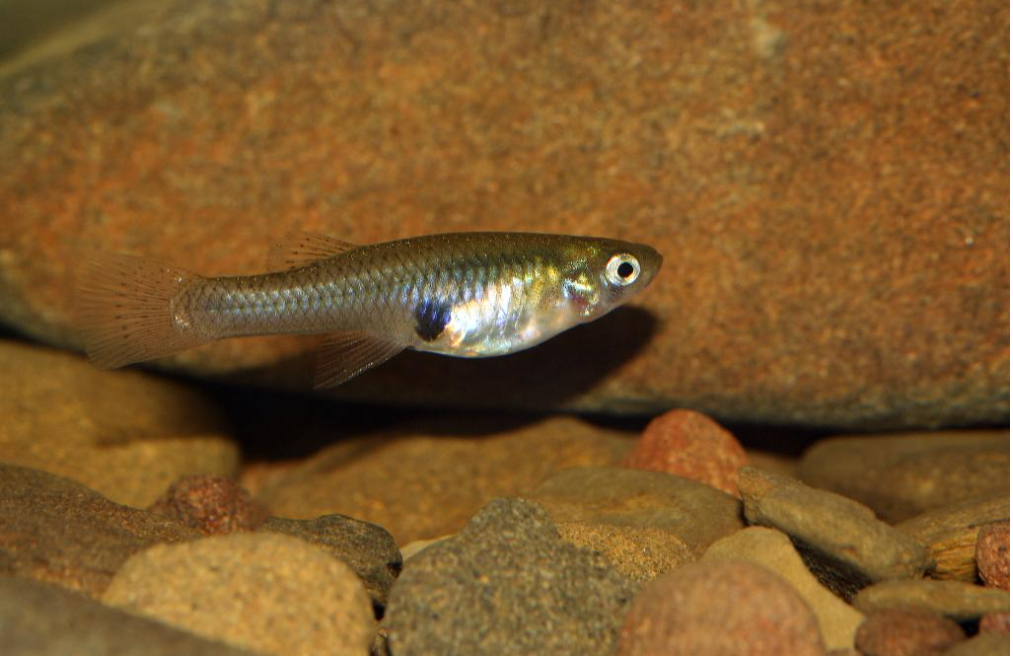Description

Disclaimer: Copyright infringement not intended.
Context
- State of Andhra Pradesh has recently released millions of Gambusia fish in many water bodies of state in a bid to control malaria, dengue and other mosquito-borne diseases.
Other Details
- As per Union Ministry of Health and Family Welfare, Government of India (MoHFW), in 2022, there were approximately 6,391 dengue cases and 2,022 malaria cases in the state.
- State of Andhra Pradesh saw a significant rise in the dengue and malaria cases.
- In last 6 months the state witnessed 2,339 dengue and 1,630 malaria cases.

Gambusia Fish
- The fish belongs to family Poeciliidae and genus Gambusia.
- This fish species shows a high breeding capacity for instance 900 and 1200 offspring could be produced during the lifespan of a single female Gambusia.
- The fish is also known as mosquitofish or gambezi.
- It is used as a biological agent for controlling mosquito larvae across the world.
- G affinis has a sister species, Gambusia holbrooki (G holbrooki), also known as the eastern mosquito fish.
Features
- These fishes are small in comparison to many freshwater fishes.
- These can grow up to 7 cm (2.8 in) in length and can survive in diverse environments.
- They are generally larvivorous however they also eat zooplankton, small insects and detritus material.
- A full grown fish can eat as much as 300 mosquito larvae per day.
Habitat and distribution
- It is considered one of the most widespread freshwater fish in the world.
- They are commonly found in shallow waters which are protected from larger fishes.
- As per MoHFW,
- Native region of Gambusia affinis (G affinis) - waters of the southeastern United States.
- Native range of the mosquitofish - southern parts of Illinois and Indiana.
Concerns
Concerns of Invasive species
- A high breeding capacity, which is 900 and 1,200 offsprings per female fish, during its lifespan lead to an imbalanced high population of this species in aquatic ecosystems.
- A season is 30 days long on an average and young ones are released in broods of 25-30 at a time.
- It may lead to more competition between other species for resources.
- They may prey upon native species thus harming the natural biodiversity in the state’s freshwater bodies.
- They are known to eat the eggs of competing fishes and frog tadpoles; Chase other fishes and restore to fin-nipping.
- Gambusia is one of the 100 worst invasive alien species in the world according to International Union for Conservation of Nature (IUCN).
- For example in Nainital India, mosquitofish was introduced in 1990 for controlling mosquito borne diseases. It had affected the ecosystem health of the Nainital lake.
Other Concerns
- Introduction of this fish, however a good biological control method for source reduction, can only be a part of an integrated approach that involves various other methods like chemical spraying.
- There are no conclusive studies about the effectiveness of Gambusia as a viable mosquito control.
- G holbrooki may be ineffective for mosquito control, as mosquito larvae comprise a negligible part of its diet.
- Not much monitoring and regulation of operations like Gambusia breeding, distribution and introductions and
- No data availability for taking remedial measures.
History and Background for Disease control
- For more than 100 years Gambusia has been used to control mosquito borne diseases across the globe, including India.
- In India, this Mosquitofish, since 1928, has been part of various malaria control strategies and previously introduced in freshwater bodies across the country, like Andhra Pradesh, Chandigarh and Uttar Pradesh.
- However few reports suggested that Gambusia’s predatory efficacy is reduced in running water streams, water bodies with high insecticide levels and waterbodies with thick vegetation.
More corrective measures
- Reducing and frequently cleaning the number of mosquito breeding sources like puddles and open drainages. – kerosene oil could be used to hamper/destroy lava growth.
- Vegetation can be cleared which host mosquitoes feed.
- As per WHO this fish species should be used in man-made breeding habitats, like swimming pools and garden ponds, and not in natural environments.
- Biologists and fish taxonomists should be encouraged to identify river basin-based lists of native fish species that can control mosquito larvae.
Conservation Status
- IUCN classifies this fish as ‘Least Concern’

Must Read Article:
Malaria
https://www.iasgyan.in/daily-current-affairs/malaria-2
https://www.iasgyan.in/daily-current-affairs/malaria-42
https://www.iasgyan.in/daily-current-affairs/malaria
Dengue
https://www.iasgyan.in/daily-current-affairs/dengue-10
https://www.iasgyan.in/daily-current-affairs/dengue-42
https://www.iasgyan.in/daily-current-affairs/dengue
|
PRACTICE QUESTION
Consider the following statements about Gambusia Fish:
1. This fish species is found effective in controlling not only Malaria but Dengue also.
2. They are considered alien species and a threat to native ecosystems.
Which of the statements given above is/are correct?
A. 1 only
B. 2 only
C. Both 1 and 2
D. Neither 1 nor 2
Answer: (C)
|
https://www.downtoearth.org.in/news/wildlife-biodiversity/gambusia-this-solution-could-actually-be-an-invasive-problem-90665












